#Pearl Restringing
Explore tagged Tumblr posts
Text
Find the Best Jewelry Repair Store near You for the Most Efficient Outcome
For a jeweler, a repair can be a nightmare since, as is customary, he must work with the existing jewelry to transform it into a masterpiece. When a repair goes smoothly, the buyer is satisfied and the jeweler's work is justified. Accepting a jewelry repair at a Jewelry Repair Store typically entails the jeweler handling the item with the utmost care and caution.
#Jewelry Repair Store#Jewelry Repair Services#Trusted Jewelry Repair#Pearl Restringing#Ring Resizing#Jewelry Cleaning
0 notes
Text
What is the Practicality of Jewelry Repairing Online?
With the best Jewelry Repair Services, you can now maintain and extend the longevity of your priceless ornaments. They deploy the latest methodologies to clean and repair your jewelry. One of the key highlights of these services is that they offer you great flexibility. Maintain the shine of your favorite ornaments by opting for repair services.

#Jewelry Repair Store#Jewelry Cleaning Services#Jewelry Restoration#Jewelry Engraving#Pearl Restringing
0 notes
Text
Choose for right Cape Cod Pearl Restringing Service In Osterville Jewelers
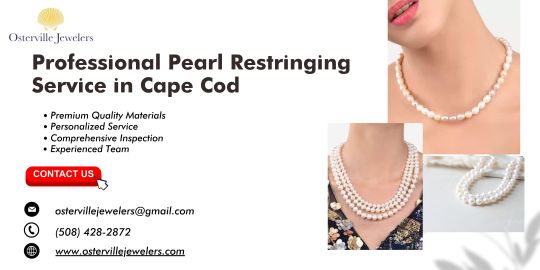
Give your pearls the love and care they deserve with our Cape Cod Pearl Restringing Service. Our specialists will carefully restring your pearls, leaving them looking elegant and flawless. Experience the beauty of perfectly restrung pearls with us.
2 notes
·
View notes
Text
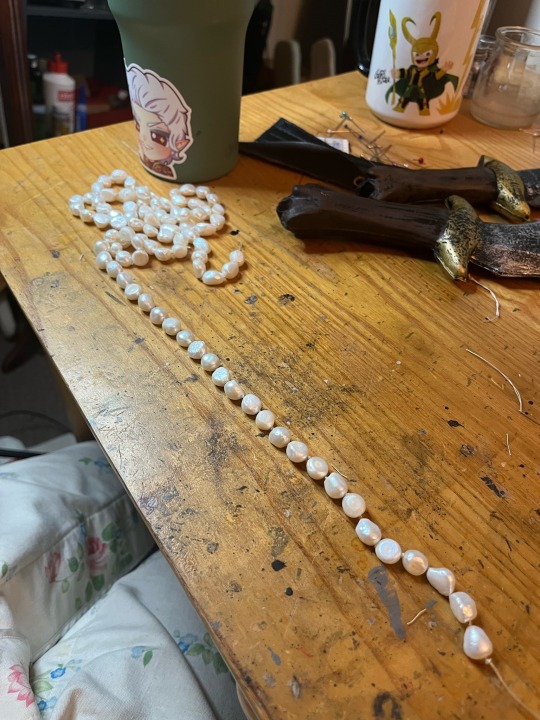
catch me restringing my Galadriel belt because past con crunch me didn't do it properly with knots between each pearl 😅
which at Katsucon resulted in the admittedly hilarious moment of Galadriel and Elrond scouring the sidewalk outside the Gaylord for fallen pearls 😂
32 notes
·
View notes
Text

Lapis lazuli and pearl necklace and earrings for Viscountess Lori. She doesn’t do a set period, so went for something vaguely medieval-ish and mimics her heraldry. She’ll get it tomorrow and if she doesn’t have a medallion for the middle, I’ll add another pearl.
Never done beads hanging off the main strand like this before, ended up restringing it a couple of times to get it right.
The best quality lapis is in the front, creating an unexpected but delightful colour gradient.
56 notes
·
View notes
Note
hi!! i love pearls they r my birthstone, would you mind explaining your job a little more? It sounds rly interesting!!
Congrats, your birthstone is the only one made by a creature instead of the earth!
I work for a specialist company. It's like a regular boring office job except that I'm staring at pearls under a bright light instead of doing whatever it is other people do in offices. I match size, shape, color, and lustre, put them into size order, and knot or restring. Most of the work I do is for other jewelers because the wide range of pearls makes doing pearl necklaces in-house very expensive. You gotta have a lot of pearls to be able to match a lot of pearls, it's cheaper to have a specialist do it.
The way pearl necklaces differ from other gemstones and such is that traditionally you build them over time. High quality pearls are very expensive, so you start with one or a few string onto a chain. Then you add new ones, typically at milestone events like birthday or good grades or whatever, and you get it restrung with the new pearls added and have the length of the chain shortened. So gradually over time your necklace stays the same length (or gets longer if that's your thing) and it gains more pearls and less chain until complete. We use silk thread which does need to be restrung every once in a while, probably at least once every ten years if you wear it often, so adding pearls also takes care of the restringing.
It makes a very expensive necklace more affordable by building it over time and the finished product is elegant and can be passed down. But this is also completely customizable, you can do different sizes of pearls together, lengths, you can stick to one or just a few pearls. There's really no rules and you can make it what you want it. It's actually pretty freaking cool how creative some people get. I like when they have a complex idea that can only be explained by a lil hand drawn diagram.
If you have pearls from family, heads up there are very old and very convincing fake pearls out there, people have been making fake pearls for hundreds of years. If you're not sure you can get them checked by an appraisal. Other tells are to look along the hole, typically the film wrapped glass beads peel around the holes. Real pearls are a bit translucent in bright light and they're a bit sandy inside, not hollow or plastic-y. Natural pearls tend to be smaller and more valuable, cultured tend to be bigger and rounder, and freshwater tend to be lumpy. Worth getting someone to take a look if you have some you think might be real. Pearls are natural so don't ever put them in anything acidic, you can dissolve them.
#pearls#no i wont check if a pearl is fake or not i am asked this sometimes and its just not something im gonna do#pay someone who checks them for a living
51 notes
·
View notes
Text

Pearl restringing job. Black pearls knotted, white ones not.
7 notes
·
View notes
Text
getting into a groove with cleaning all of my jewelry today/tonight. I've cleaned so many pieces of very tarnished silver jewelry today y'all. I also went ahead and did a few of my mom's pieces since she's not likely to do them, but is also unlikely to wear them all tarnished.
This is making me think that I should just go through my jewelry and get rid of pieces that I should have admitted a long time ago I'd never wear that are still hanging around for .... reasons? hope that I'd change my mind?? idk
This project has also created a little pile of pieces that I'm planning on taking to the jeweler's tomorrow. Projects for the jeweler's:
late grandma's little sterling silver cherub ring that has a snapped band.
art deco danish sterling/enamel necklace from the 30s that needs a really good cleaning that I can't really provide it.
great-grandma's engagement ring that I'd like appraised and potentially sized down so I can wear it.
my string of pearls that really needs to be restringed.
a little tiny golden heart necklace pendant with some kind of clear stones that is unmarked that I'd like ID'd. Like this thing is either gold with diamonds or totally costume and I can't really tell. Votes for gold/diamond: stones are very clear, golden metal does not tarnish or discolor in any way, and metal is worked delicately.
3 notes
·
View notes
Text
I’m a bit new to makeup and I don’t wear it every day but one time I went to hook up with this guy I met and he had said he has a thing for 1920s flapper girls so I spent an hour doing my hair and makeup, put on a champagne slip, bought stockings to go with my thrifted heels, borrowed my aunt’s pearl necklace and showed up to his apartment. I told my family I was going to a friend’s house to make a short film but I forgot to take a picture of how pretty I looked before I left. I was a dainty little doll but he ruined me. He spit in my face and told me to deep throat him until my makeup was all smeared. He pulled my hair and ripped my stockings to fuck me better and coated my slip with his cum. The pearl necklace he tore from my neck when he was choking me, and I started crying when it broke so we stopped. I crawled naked on my hands and knees to pick up all the pearls from the floor while he called me a good girl and said he was very sorry and told me he’d take care of it. His aftercare was cuddling me and combing my hair and cleaning my face with a cloth and sitting at his desk restringing my pearl necklace as I sat on his lap. It was my first rough fuck and it was like a dream. I haven’t met up with him again but I really feel that I should.
#hypersexual#hyperromantic#hyperfemininity#hyper feminine#hyperrose#sex positive#sex diary#sluttraining#coquette
4 notes
·
View notes
Text
Find the Best Jewelry Repair Store near You for the Most Efficient Outcome
For a jeweler, a repair can be a nightmare since, as is customary, he must work with the existing jewelry to transform it into a masterpiece. When a repair goes smoothly, the buyer is satisfied and the jeweler's work is justified. Accepting a jewelry repair at a Jewelry Repair Store typically entails the jeweler handling the item with the utmost care and caution.
#Jewelry Repair Store#Jewelry Repair Services#Trusted Jewelry Repair#Pearl Restringing#Ring Resizing#Jewelry Cleaning
0 notes
Text
I've strung pearls in a less official capacity (aka worked part-time for an independent jeweler as a teenager) and have another possibility to offer!
As sashaforthewin said, the standard practice is to knot each pearl, particularly if they're real pearls. But as you can imagine, this can take awhile, and it can get expensive to get pearls restrung by even an uncertified professional. (My numbers are 15+ years out of date--Sashaforthewin and other jewelry professionals can probably give more accurate numbers, but quotes I found on the Internet were ~$5-10 an inch, and you're supposed to get them restrung at least every 2-3 years based on how often you wear them. Martha Wayne's necklace is usually depicted as a pretty standard single-string 16-18" necklace, if you want to do the math.)
We mostly restrung people's heirlooms, so most people were more than willing to pay that price for restringing real pearls. But sometimes people came in with imitation pearls that they found in an estate sale (or worse, that they inherited from a much wealthier relative, only for us to tell them that Great Aunt Mildred's prized pearl necklace is actually faux pearls she probably bought before she married her wealthy husband. Awkward.) And perhaps this is reflective of our clientele, but sometimes those people would balk at the price of hand-knotting "fake" pearls, which are significantly cheaper than actual pearls. But they still wanted to restring them to make them good enough to wear somehow.
For those clients, we offered a cost-saving measure: we'd use suitably colored seed beads between each faux pearl for a small segment (usually 3-5 of them), then knot between segments. It obviously wasn't ideal for the necklace's strength and integrity over time, and people would be able to tell on closer inspection--and we would tell them so--but it cut down on cost due to saving time/labor, and they'd look right at a reasonable distance and thus would be fine for wearing to cocktail parties, date night, etc. Most people coming in with imitation pearls chose that option.
The Waynes could definitely afford to get a real pearl necklace, and to get them regularly and professionally restrung without this measure. But they were also going to see an action movie with their 8-year-old son, not a fancy occasion. Perhaps Martha decided not to wear the "nice" pearls that day, opting for an older imitation set she had. (My fanfic brain suggests that perhaps they were from when she was younger, like those customers' relatives. A gift from Thomas early in their courtship, perhaps? Or her first piece of "grown-up" jewelry as a teen in an old, respected family whose wealth had seen better days? But that's even more speculation than the rest of this post already is.) They would be in a dark theatre, so if other people saw them there nobody would be able to tell they weren't hand-knotted up close.
But you know who also wouldn't be able to tell the difference? An 8-year-old boy, who would just see his mother wearing a pearl necklace. Or a mugger in a somewhat fancy neighborhood looking for a rich target.
Honestly, I think that would make their deaths even more heartbreaking. Imagine a young Bruce researching something jewelry-related for Batman training and learning about how you're supposed to hand-knot pearls. Realizing something doesn't line up with his memory of that night, he starts looking into it and discovers that his parents not only got murdered in a random mugging, but over a cheap necklace that only looked fancy.
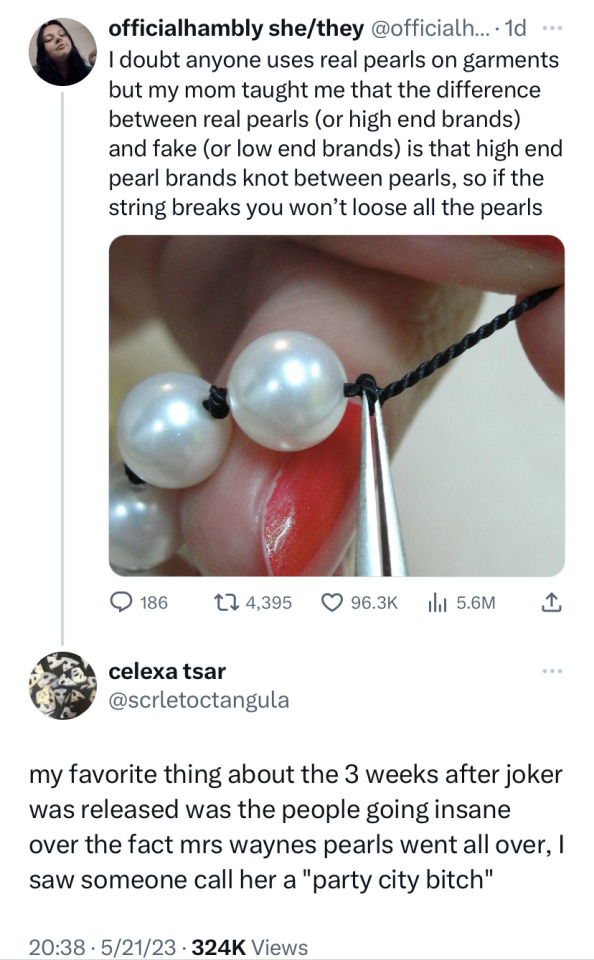
83K notes
·
View notes
Text
Jewelry Maintenance Schedule: What You Should Know
Maintaining your jewelry regularly is essential for preserving its beauty, durability, and value. A structured jewelry maintenance schedule helps prevent tarnishing, keeps gemstones secure,
and ensures your pieces remain in excellent condition for years. This guide provides a comprehensive jewelry care routine for daily, weekly, monthly, and yearly maintenance. Titanium earrings for sensitive ears
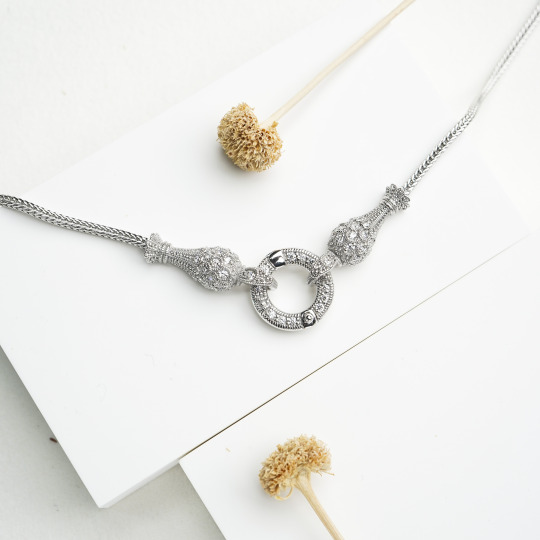
Daily Jewelry Care Routine
Wipe jewelry after wearing – Use a soft, lint-free cloth to remove oils, sweat, and dirt.
Store jewelry properly – Keep pieces in a fabric-lined jewelry box or soft pouches to prevent scratches.
Avoid harsh chemicals – Remove jewelry before applying perfumes, lotions, or using cleaning products.
Take off jewelry before activities – Prevent damage by removing rings, bracelets, and necklaces before exercising, swimming, or doing household chores.
Weekly Jewelry Care Routine
Inspect frequently worn pieces – Check for loose stones, weak clasps, or signs of wear.
Gently clean with a soft cloth – Wipe down jewelry to maintain its shine and remove buildup.
Organize jewelry storage – Ensure that pieces are not tangled or stored in damp areas.
Monthly Jewelry Care Routine
Deep clean fine jewelry – Use mild soap and warm water to clean gold, platinum, and gemstone jewelry.
Polish tarnished silver – Use a specialized silver polishing cloth to restore luster.
Check costume jewelry for signs of wear – Look for peeling plating or loose stones and avoid excessive exposure to moisture.
Rotate jewelry usage – Wearing different pieces prevents overuse and damage to favorites.
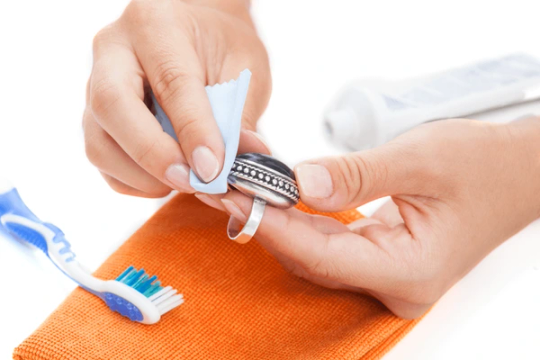
Yearly Jewelry Maintenance
Professional inspection and cleaning – Take fine jewelry to a jeweler for thorough cleaning and security checks on gemstones.
Replate or restring jewelry as needed – White gold may need rhodium plating, and pearl or beaded jewelry may require restringing.
Update storage methods – Replace anti-tarnish strips and organize jewelry to prevent damage over time.
Evaluate repairs – Fix broken clasps, bent rings, or worn-down prongs before they worsen.
A proper jewelry maintenance schedule ensures that your treasured pieces stay in pristine condition. By following daily, weekly, monthly, and yearly care routines, you can preserve the beauty and longevity of your jewelry collection for generations to come.
0 notes
Text
Discover Unique Elegance at Carolina Liguori Jewelry Studio in Fort Smith
If you're searching for a handcrafted jewelry shop that values individuality, artistry, and sustainable craftsmanship, look no further than Carolina carojewelry Jewelry Studio in Fort Smith. Known for its distinctive approach to jewelry design, this studio is where creativity meets quality. Whether you're looking for statement necklaces, personalized engraved accessories, or need expert jewelry repair near you, Carolina Liguori is a trusted name in the Fort Smith community.
At the heart of Carolina Liguori’s vision is a deep appreciation for unique, handcrafted pieces that tell a story. Each item is thoughtfully designed and created with care, using an eclectic mix of materials such as acrylic, malachite, silicone, and freshwater pearls. This diverse range of materials brings a fresh, modern twist to traditional jewelry making, making every necklace, bracelet, or ring a true original.
One of the standout services offered by the studio is their custom jewelry designer service. Customers who are looking for something deeply personal—whether it’s an engagement ring, a meaningful pendant, or a memorable gift—can work directly with a designer to bring their ideas to life. This collaborative process ensures that every custom piece is not only beautiful but also rich in personal significance.
Another highly requested service is personalized engraving, which allows customers to add a heartfelt touch to their jewelry. Whether it’s initials, dates, or short messages, engraved jewelry adds emotional value and makes a piece truly one of a kind. It's a perfect option for anniversaries, birthdays, or commemorating a special life event.
In addition to crafting new pieces, Carolina Liguori Jewelry Studio is also a reliable destination for jewelry repair near me in Fort Smith. Whether it’s fixing a broken clasp, resizing a ring, or restringing a cherished necklace, their expert jewelers provide careful, precise repair services. Customers can trust that their treasured items are in good hands.
For those interested in more ethical fashion choices, the studio also specializes in sustainable bead jewelry. By thoughtfully sourcing materials and minimizing waste, the studio creates eco-friendly pieces that align with modern values without compromising on beauty or durability. The result is jewelry that not only looks good but also feels good to wear.
Additionally, the studio serves as a local jewelry appraiser. Whether you need a professional valuation for insurance purposes, resale, or simply for your own records, you can rely on the knowledgeable staff to provide accurate, trustworthy assessments.
Carolina Liguori Jewelry Studio has become a go-to destination for those in Fort Smith and beyond who are seeking artisan necklace designs and personalized service. With its focus on quality, sustainability, and customer collaboration, it’s more than just a jewelry shop—it’s a creative space where lasting beauty is born.
Whether you’re looking to create something new, repair a beloved piece, or discover one-of-a-kind handcrafted jewelry, Carolina Liguori Jewelry Studio is where artistry meets personal expression.
1 note
·
View note
Text
Vintage Jewelry Restoration
Vintage jewelry holds not only aesthetic beauty but also historical and sentimental value. However, with time, even the finest pieces may experience wear and damage. Restoring vintage jewelry is a delicate process that breathes new life into cherished heirlooms while preserving their original charm vintage diamond rings.
1. Cleaning and Polishing
The first step in restoration is a thorough cleaning and polishing. Over the years, dirt, oils, and tarnish can accumulate on metals and gemstones. Professionals use gentle, non-abrasive techniques to clean vintage pieces, ensuring the materials are safely restored to their original brilliance without damage.
2. Repairing Settings and Replacing Stones
Loose or missing stones are common in older jewelry. A skilled jeweler will carefully repair or tighten prongs, bezels, or settings, ensuring stones are secure. In cases where a stone is lost, jewelers source period-appropriate gemstones or expertly cut new ones to match the original design.
3. Reworking Metal and Engravings
Vintage jewelry may show signs of wear, such as scratches or bent metal. Jewelers can carefully smooth and reshape metals like gold, platinum, and silver. For pieces with intricate engravings or filigree work, artisans delicately restore faded or damaged details, reviving the original artistry.
4. Restringing Beaded Jewelry
Necklaces and bracelets with beads, pearls, or gemstones can suffer from worn-out stringing over time. Restringing ensures the piece is safe to wear again, while maintaining the original pattern and arrangement of the beads. High-quality silk or nylon thread is used to restore necklaces to their former glory.
5. Preserving Patina
A crucial aspect of vintage jewelry restoration is maintaining the patina, or the natural wear that gives older pieces their unique character. Rather than removing this natural aging, skilled restorers strike a balance between cleaning and preserving the piece’s original finish to retain its vintage appeal.

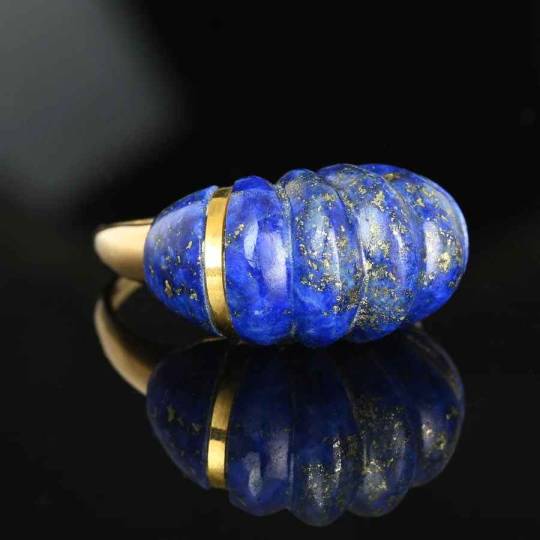
1 note
·
View note
Text
Jewelry Care Tips for Keeping Your Pieces in Top Condition
Proper care of your jewelry is essential to maintain its beauty and longevity. Here are some key tips to ensure your precious pieces stay in excellent condition:
1. Cleaning Your Jewelry
Use Mild Soap and Water: Mix a small amount of mild soap with lukewarm water. Use a soft cloth or a gentle brush to clean your jewelry.
Avoid Harsh Chemicals: Keep your jewelry away from harsh chemicals like bleach or ammonia, which can damage metals and gemstones.
Rinse and Dry Thoroughly: After cleaning, rinse your jewelry with clean water and pat it dry with a soft cloth.
2. Storing Your Jewelry
Separate Pieces: Store different types of jewelry separately to avoid scratches. Use individual pouches or compartments.
Avoid Direct Sunlight: Store your jewelry in a cool, dry place away from direct sunlight, which can fade or discolor certain materials.
Use Anti-Tarnish Strips: Place anti-tarnish strips in your jewelry box to prevent tarnishing of silver items.
3. Wearing Your Jewelry
Put Jewelry On Last: Apply makeup, perfume, and hairspray before putting on your jewelry to avoid exposure to chemicals.
Remove Before Physical Activities: Take off your jewelry before swimming, exercising, or doing household chores to prevent damage or loss.
Check for Loose Stones: Regularly inspect your jewelry for loose stones or clasps, and have them repaired by a professional jeweler if necessary.
4. Special Care for Different Materials
Gold: Clean gold jewelry with a solution of warm water and mild detergent. Avoid chlorine, which can weaken gold over time.
Silver: Use a silver polishing cloth to remove tarnish. Store silver jewelry in a cool, dry place to prevent oxidation.
Gemstones: Different gemstones require different care. For example, pearls should be kept away from moisture, while diamonds can be cleaned with a soft brush and soapy water.
5. Regular Maintenance
Professional Cleaning: Consider having your jewelry professionally cleaned and inspected once a year to maintain its condition.
Restringing Pearls: If you wear pearl necklaces frequently, have them restrung periodically to prevent breakage.
By following these jewelry care instructions, you can preserve the beauty and value of your cherished pieces for years to come.
0 notes
Text
How to Care for Your Pearl Choker Necklace
Pearl choker necklaces are exquisite pieces of jewelry that require proper care to maintain their beauty and luster. Pearls are delicate gems, and their organic nature makes them susceptible to damage if not handled correctly. Here are some essential tips on how to care for your pearl choker necklace to ensure it remains a cherished piece in your jewelry collection for years to come.
Understanding Pearl Care
Pearls are formed within living oysters and are composed of layers of nacre, making them more delicate than other gemstones. They are sensitive to chemicals, heat, and moisture. Proper care involves gentle handling and regular maintenance to keep them looking their best.
Cleaning Your Pearl Choker Necklace
Gentle Cleaning: Clean your pearl choker necklace regularly to remove any dirt or oils. Use a soft, damp cloth to gently wipe the pearls after each wear. Avoid using harsh chemicals or abrasive materials.
Mild Soap Solution: For a deeper clean, use a mild soap solution. Mix a small amount of gentle soap with lukewarm water. Dip a soft cloth into the solution and gently wipe the pearls. Rinse with a damp cloth and dry with a soft, lint-free cloth.
Avoid Submersion: Never submerge your pearl choker necklace in water. Excessive moisture can weaken the silk thread and cause the pearls to become loose.
Storing Your Pearl Choker Necklace
Separate Storage: Store your pearl choker necklace separately from other jewelry to prevent scratches. Use a soft pouch or a dedicated compartment in a jewelry box.
Avoid Plastic Bags: Do not store your pearls in plastic bags, as they can emit chemicals that damage the pearls’ surface. Opt for cloth pouches or soft-lined boxes instead.
Moist Environment: Pearls need a certain level of humidity to maintain their luster. Store them in a slightly humid environment to prevent them from drying out and becoming brittle.
Handling Your Pearl Choker Necklace
Last On, First Off: When dressing, put on your pearl choker necklace last to avoid contact with makeup, hairspray, and perfumes. Remove it first when undressing to prevent damage.
Avoid Contact with Chemicals: Keep your pearls away from chemicals such as household cleaners, chlorine, and cosmetics. These substances can damage the nacre and dull the pearls’ shine.
Regular Restringing: Have your pearl choker necklace restrung regularly, preferably every 1-2 years, depending on how often you wear it. This ensures the silk thread remains strong and prevents breakage.
Conclusion
Caring for your pearl choker necklace is essential to preserve its beauty and longevity. By following these simple cleaning, storing, and handling tips, you can ensure that your pearls remain lustrous and elegant for years to come. Proper care will keep your pearl choker necklace a cherished and timeless piece in your jewelry collection, allowing you to enjoy its elegance for many special occasions.
0 notes